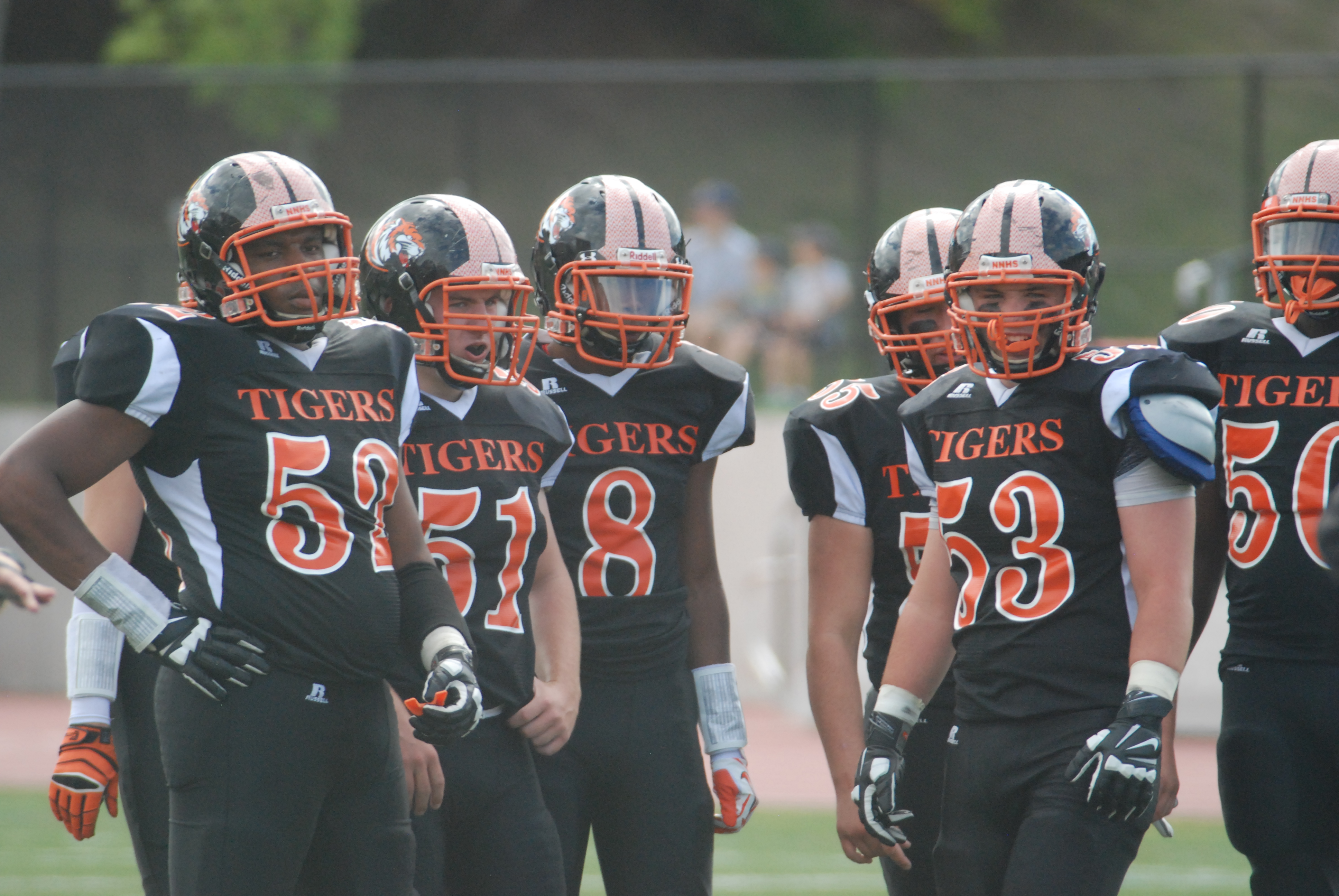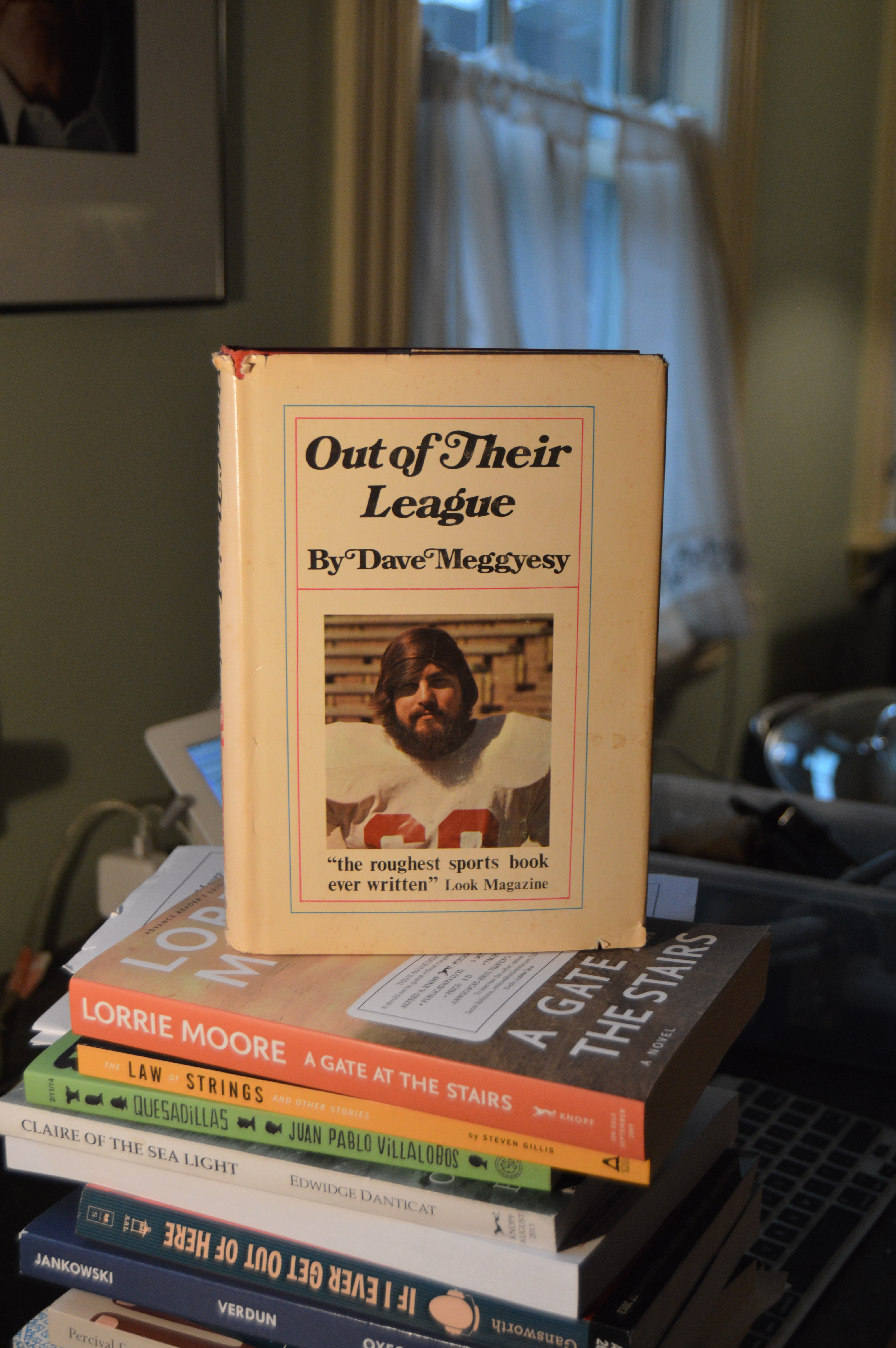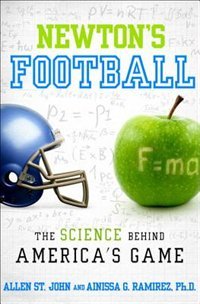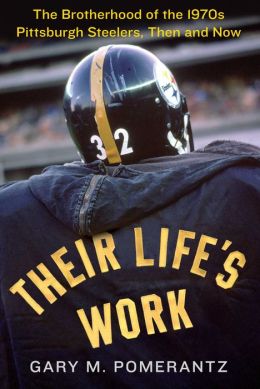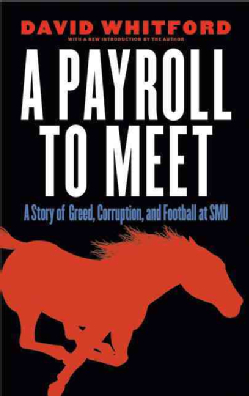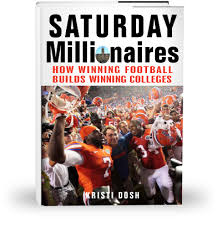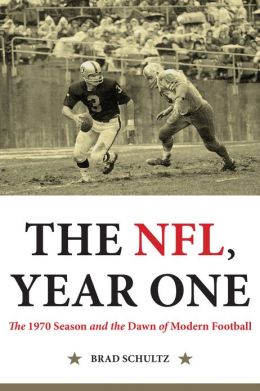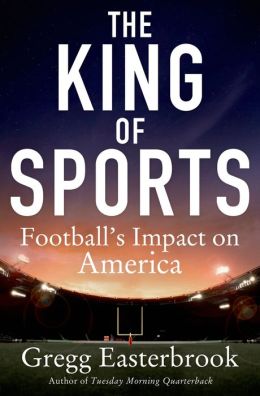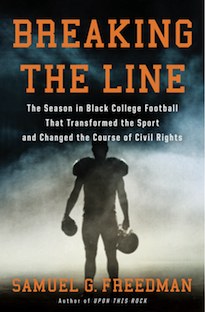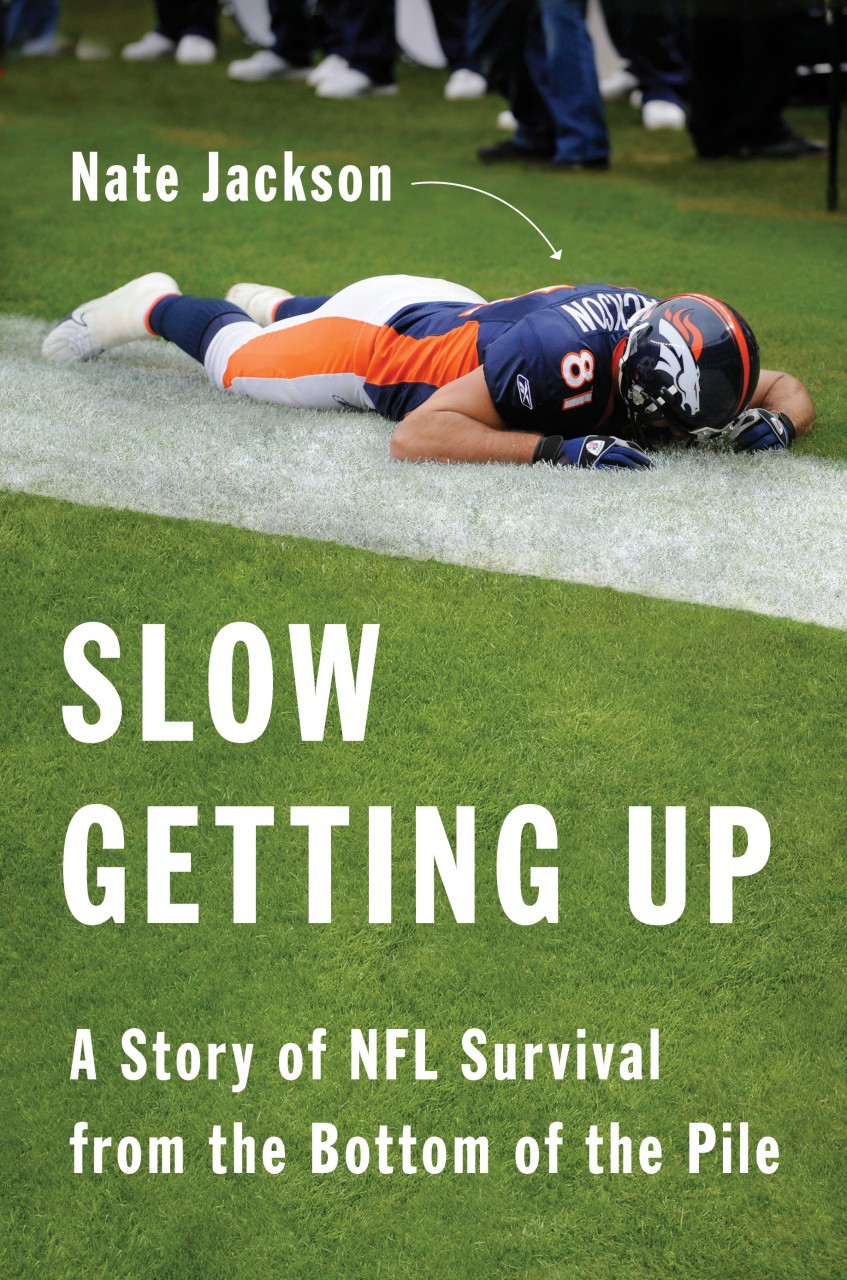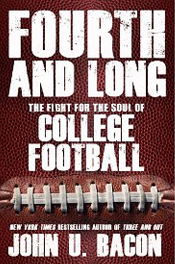
Take Down With Bad Intent: Books on Football
I am trying to recall if, as a young urban American male, I had any choice in becoming attached to the singularly northamericano sport of football. It’s not like my local high schools were hotbeds of Friday-night-lights mania. The local Big Ten school, Northwestern, was traditionally a whipping boy for its conference adversaries—Dick Butkus’s Chicago Vocational High School team could probably beat them. Also, it was not a sport that a budding dissident like myself, who admired Jack Kerouac (although Kerouac did play for Columbia University) and Che Guevera, ought to have gravitated toward.
This etiological investigation has recently become an issue when attending my son’s high-school football games, wherein young warriors are frequently laid out for some scary moments, on some occasions physically ruined, leaving me with a strong distaste for the game and its fans. But what really tipped the scales for me was hearing Herm Edwards, former NFL player and coach, and current ESPN analyst, explaining that the definition of a good defensive play was “to take down the opponent with bad intent.”
While football does not stimulate as much literature as our National Pastime, I noticed this season a spate of books football related, with a number of titles referring to some crisis or scandal tied to the current mores and protocols of all levels of the game or various malefactors blackening the eye of the sport.
But let’s start with a classic. Out of Their League by Dave Meggysey (Bison Books) was originally published in 1973. Star St. Louis Cardinal linebacker Meggyesy’s memoir tells of giving up his career to expose the dehumanization he and other pro players experienced—as well as organized football’s dirty secrets. Out of Their League was listed at number sixty-three of the top 100 sports books of all time by Sports Illustrated. Meggyesy later served as an executive in NFL player’s union.
Here Meggyesy talks to Dick Cavett about his football experience:
Newton’s Football: The Science Behind America’s Game by Allen St. John and Ainissa Ramirez (Ballantine Books): Journalist Allen St. John and former Yale professor Ainissa Ramirez inform on subjects such as what Vince Lombardi has in common with Isaac Newton, how the hardwired behavior of monkeys can explain a head coach’s reluctance to go for it on fourth down, why a gruesome elevator accident jumpstarted the evolution of place kicking, how Teddy Roosevelt saved football using the same behavioral science concept that Dreamworks would use to save Shrek, and how better helmets actually made the game more dangerous. Obviously there are some playful, nay, silly stories that some readers may find enjoyable, but this collection of football-related facts can change the way one perceives the organized chaos that is football.
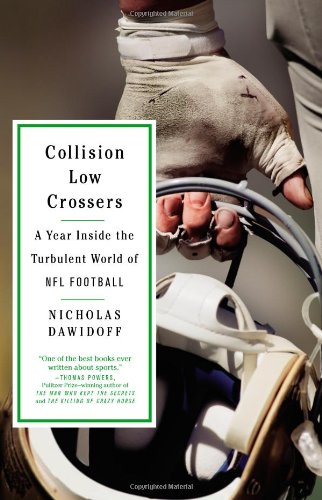
Collision Low Crossers: A Year Inside the Turbulent World of NFL Football by Nicholas Dawidoff (Little, Brown): Dawidoff, who has previously written on the baseball-player/spy Moe Berg and edited the Library of America’s baseball anthology, spent 2011 with the New York Jets, reporting to the team’s facility daily (he was assigned a locker and a parking space), beginning with the team’s preparation for the yearly draft all through their 8-8 season. In the hands of a skillful observer such as Dawidoff, the volatile personalities and intricacies of running a professional football team become both accessible and understandable. And in just the way Mike Lewis’s Moneyball understood the key to success was accurate talent evaluation, Collision Low Crossers surveys that process in the NFL.
Their Life’s Work: The Brotherhood of the 1970s Pittsburgh Steelers, Then and Now by Gary M. Pomerantz (Simon & Schuster): The seventies’ Pittsburgh Steelers were a dynasty that produced four Super Bowl wins and twelve Hall of Famers that were nearly household names in their time. Pomerantz conducted about 200 interviews to put together this feel-good story of sports camaraderie.
Driven: From Homeless to Hero, My Journeys On and Off Lambeau Field by Donald Driver (Crown Archetype): Another feel-good story as fourteen-year NFL veteran Donald Driver overcomes homelessness and poverty, attends a small black college, is the Green Bay Packers seventh-round pick in the 1999 NFL draft, and is a vital part of the 2010 Super Bowl championship team. And to cap off his unlikely story, he was the champion of the 2012 season of Dancing With the Stars.

Rising Tide: Bear Bryant, Joe Namath, and Dixie’s Last Quarter by Randy Roberts and Ed Krzemienski (Twelve): The mystique of University of Alabama (aka the Crimson Tide) football began well before the current regime. Randy Roberts, Purdue history professor, and Ed Krzemienski, who helped make HBO’s Emmy-winning Joe Namath documentary, masterfully set the stage for two larger-than-life characters—Alabama football coach Paul “Bear” Bryant and flamboyant star quarterback Joe “Willy” Namath. It’s a match that could have been concocted in a Hollywood story meeting: Southern football legend meets brash gifted athlete fresh from the coal-mining towns of Pennsylvania. It’s as entertaining as any sports story you are likely to read. Read an excerpt here.
A Payroll to Meet: A Story of Greed, Corruption, and Football at SMU by David Whitford (University of Nebraska Press): Like many schools in football-crazed Texas, Southern Methodist University was seriously committed to a competitive football program. It turns out that to succeed, the SMU football program engaged in ethics, rules, and recruiting violations for years. Fortune magazine writer David Whitford unpacks this tawdry story and looks at illicit practices such as a huge slush fund used to pay players from the mid-1970s through 1986, to the university’s response when it was exposed. He reports that Bill Clements, chairman of the SMU board, and athletic director Bob Hitch opted to phase out the payments rather than cease them immediately. The reason? The football program had “a payroll to meet.” It should not go unreported that this same university shuttered its well-regarded SMU Press. What does that tell you?
Saturday Millionaires: How Winning Football Builds Winning Colleges by Kristi Dosh (Wiley): Sports business reporter, attorney, author, and sports-management instructor Kristi Dosh comes down on the wrong side of history, providing a brief supporting a school’s right to fund their football teams first and reject the rights of student athletes to any of the billion dollars in revenue that accrue to Football Bowl Subdivision college-football programs. It’s a book to warm the hearts of university athletic directors and football coaches everywhere.
The NFL, Year One: The 1970 Season and the Dawn of Modern Football by Brad Schultz (Potomac Books): 1970 marks the year rival National Football League and the American Football League merged and saw the introduction of Monday Night Football with Keith Jackson, Howard Cosell (“the mouth that roared”), and “Dandy” Don Meredith. The final pre-merger AFL-NFL Super Bowl saw the AFL champion Kansas City Chiefs defeat the NFL champion Minnesota Vikings, 23–7. Schulz focuses on a few key games to account for the coming changes in the professional game.
Clouds Over the Goalpost: Gambling, Assassination, and the NFL in 1963 by Lew Freedman (Sports Publishing): Another event-filled year for pro football: two all-star players, Paul Hornung and Alex Karras, were discovered gambling on the sport. Baltimore Colts’ Eugene “Big Daddy” Lipscomb was found dead, reportedly from a heroin overdose. The NFL’s rival football circuit was gaining an audience, culminating in a TV contract in 1965, and most cravenly the NFL decided to play out its schedule on the weekend of November 24-25, 1963. And the Chicago Bears won the NFL championship.
The King of Sports: Football’s Impact on America by Gregg Easterbrook (Thomas Dunne Books): Political lefty and contributing Atlantic Monthly editor and ESPN.com columnist Gregg Easterbrook maintains “football is the perfect game for the cultural contradictions of the United States.” He reports that the NFL presently pledges “less than one fifth of 1 percent of the revenue of the league to programs promoting player safety.” In the course of his exegesis, he puts forward his notion of an exemplary college football program: The Virginia Tech Hokies have a winning program, acknowledge concussions, and its African-American players graduate at a respectable rate. He also discusses the Crimson Tide’s not-so admirable program, where coach Nick Saban propagates what Easterbrook cites as the “Grand Illusion,” where he claims Saban has abandoned the idea of selling recruits on “tradition, a fine campus, and a big stadium full of loyal fans,” and sells the idea that playing for Alabama is a stepping stone to an NFL contract—which Easterbrook believes is a deception. He goes on to argue against the popular notion that “black males can achieve career success without doing well in high school and college,” which he labels “a mirage.”
Breaking the Line: The Season in Black College Football That Transformed the Sport and Changed the Course of Civil Rights by Samuel G. Freedman (Simon & Schuster): This is the story of the battle for the 1967 black college championship, between Louisiana’s Grambling College and Florida A&M. Coached by football legends Eddie Robinson and Jake Gaither, the spotlight shifts to the “best quarterbacks ever at each school,” James Harris and Ken Riley. Set in the roiling desegregating sixties, Freeman contends that this championship season spurred the desegregation of football teams in the South and dispelled the prejudice against black quarterbacks.
Slow Getting Up: A Story of NFL Survival from the Bottom of the Pile by Nate Jackson (Harper): Former Denver Bronco Nate Jackson pens a straightforward memoir of life in the NFL if you are not a star or franchise player—which are the vast majority of players. At one time his revelations might have been shocking, but the NFL’s response to the concussion lawsuits is an accurate litmus test of the league’s concern for players.
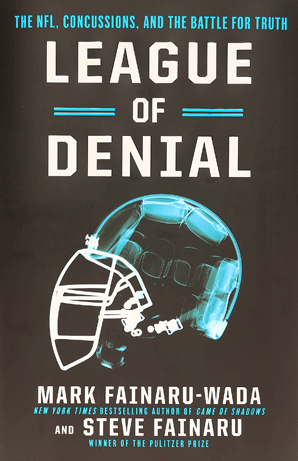
League of Denial: The NFL, Concussions and the Battle for Truth by Mark Fainaru-Wada and Steve Fainaru (Crown Archetype): This is the book on which Frontline’s documentary League of Denial: The NFL Concussion Crisis is based. The NFL formed the “Mild Traumatic Brain Injury Committee” from which it continually cited research that claimed “NFL players were impervious to brain damage.” In an absurd mockery of common sense and medical science, the committee asserted that concussions were minor injuries that did not lead to long-term problems with the brain. The documentary made the news when ESPN distanced itself from the film, reportedly under pressure from the NFL.
The War on Football: Saving America’s Game by Daniel J Flynn (Regnery Publishing): Here’s a right-wing response to the view of people like Greg Easterbrook, and asserts that football players don’t commit suicide at elevated levels, die younger than their peers, or suffer disproportionately from heart disease—emphasizing that professional players live longer, healthier lives than most American men. Who is responsible for all this misinformation? “Doctors pushing ‘science’ that benefits their hidden business interests to lawyers promulgating scam litigation.”
Fourth and Long: The Fight for the Soul of College Football by John U. Bacon (Simon & Schuster): Bacon embedded himself in four Big Ten football programs—Penn State, Ohio State, Michigan, and Northwestern–unabashedly searching for evidence of the long cherished student-athletics ideals that have seemingly been set aside by numerous college football scandals. Did he find them? You can probably guess.
The System: The Glory and Scandal of Big-Time College Football by Jeff Benedict and Armen Keteyian (Doubleday): In 2012, investigative journalists Jeff Benedict and Armen Keteyian accessed football programs at the highest levels across the country, gathering eye-witness accounts from athletic directors and coaches, boosters and high-profile TV stars, five-star recruits, NCAA investigators, and the no-name kids upon whom the whole system depends. They concluded, as the title suggests, that along with the glory, the college game is still rife with slush funds, “football hostesses,” abysmal graduation rates, cover ups, and on and on.
Yes, indeed, that’s America’s Game. And we haven’t even dealt with the fan behavior. My buddy Allan Gurganus told me his friends in Oxford, Mississippi, are afraid to leave their homes on the weekend when LSU plays Ole Miss.
———
About the author: Robert Birnbaum’s Social Security number ends in 2247. He lives in zip code 02465 and area code 617. He was born in the 2nd month of a year in the 20th century. He doesn’t social network (used as a verb) except through his Cuban retriever Beny (named after Beny More, the Frank Sinatra of Cuba). Izzy Birnbaum also has cloud storage and uses electronic mail. He hopes his son Cuba is the second coming of Pudge Rodriguez. He mutters to himself at Our Man In Boston.

